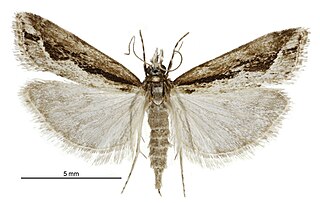
Eudonia steropaea is a species of moth of the family Crambidae. It was named by Edward Meyrick in 1884. Meyrick gave a detailed description of this species in 1885. It is endemic to New Zealand.

Eudonia octophora is a species of moth of the family Crambidae. It was named by Edward Meyrick in 1884. It is endemic to New Zealand.

Eudonia asterisca is a moth in the family Crambidae. It was named by Edward Meyrick in 1884 and is endemic to New Zealand. It has been recorded in both the North and South Islands. This species is recorded as being present at sea level up to altitudes of 1350 m. This species has been recorded as inhabiting native podocarp/hardwood forests. The adults of this species are on the wing from December until March although they have also been recorded in October and November. They are attracted to light and have also been trapped via sugar traps.

Eudonia chlamydota is a moth in the family Crambidae. It was named by Edward Meyrick in 1884. It is endemic to New Zealand.

Eudonia cymatias is a moth in the family Crambidae. It was named by Meyrick in 1884. This species is endemic to New Zealand.

Eudonia epicremna is a moth in the family Crambidae. It was named by Edward Meyrick in 1884. This species is endemic to New Zealand.

Eudonia legnota is a moth in the family Crambidae. This species was named by Edward Meyrick in 1884. It is endemic to New Zealand.

Eudonia leptalea is a moth in the family Crambidae. This species is endemic to New Zealand, including the Chatham Islands.

Eudonia psammitis is a moth in the family Crambidae. It was named by Edward Meyrick in 1884. Meyrick gives a description of the species in 1885. It is endemic to New Zealand, including the Campbell Islands.
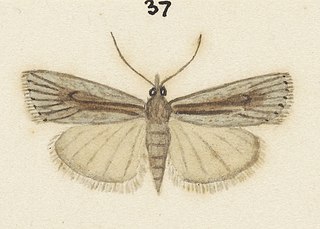
Eudonia paltomacha is a moth in the family Crambidae. It was described by Edward Meyrick in 1884. It is endemic to New Zealand.

Eudonia zophochlaena is a moth in the family Crambidae. It was described by Edward Meyrick in 1923. It is endemic to New Zealand. It has been hypothesised that this species is a North Island endemic. The adults of this species are on the wing from December until February. The larvae of this species are leaf miners of the leather-leaf fern Pyrrosia eleagnifolia.

Eudonia hemiplaca is a moth in the family Crambidae. It was described by Edward Meyrick in 1899. It is endemic to New Zealand.
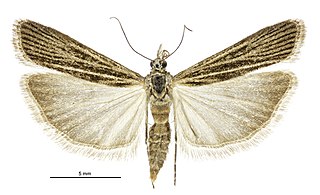
Eudonia atmogramma is a moth in the family Crambidae. It was described by Edward Meyrick in 1915. It is endemic to New Zealand.
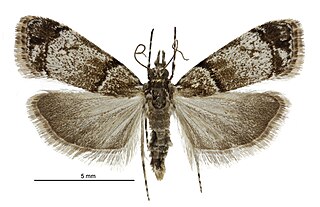
Eudonia choristis is a moth in the family Crambidae. It was described by Edward Meyrick in 1907. It is endemic to New Zealand.

Eudonia dochmia is a moth in the family Crambidae. It was described by Edward Meyrick in 1905. It is endemic to New Zealand.

Eudonia gyrotoma is a moth in the family Crambidae. It was described by Edward Meyrick in 1909. This species is endemic to New Zealand.

Eudonia luminatrix is a moth in the family Crambidae. It was described by Edward Meyrick in 1909. This species is endemic to New Zealand.

Eudonia meliturga is a moth in the family Crambidae. It was described by Edward Meyrick in 1905. This species is endemic to New Zealand.
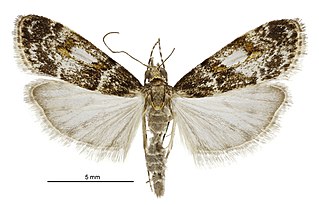
Eudonia thyridias is a moth in the family Crambidae. It was described by Edward Meyrick in 1905. It is endemic to New Zealand.
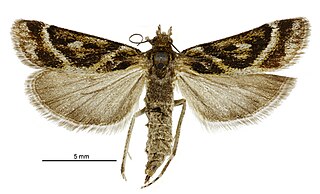
Eudonia xysmatias is a moth in the family Crambidae. It was first described by Edward Meyrick in 1907. This species is endemic to New Zealand and has been observed and collected in Otago. This species inhabits wetlands. Adults are day flying and are on the wing in December and January.





















